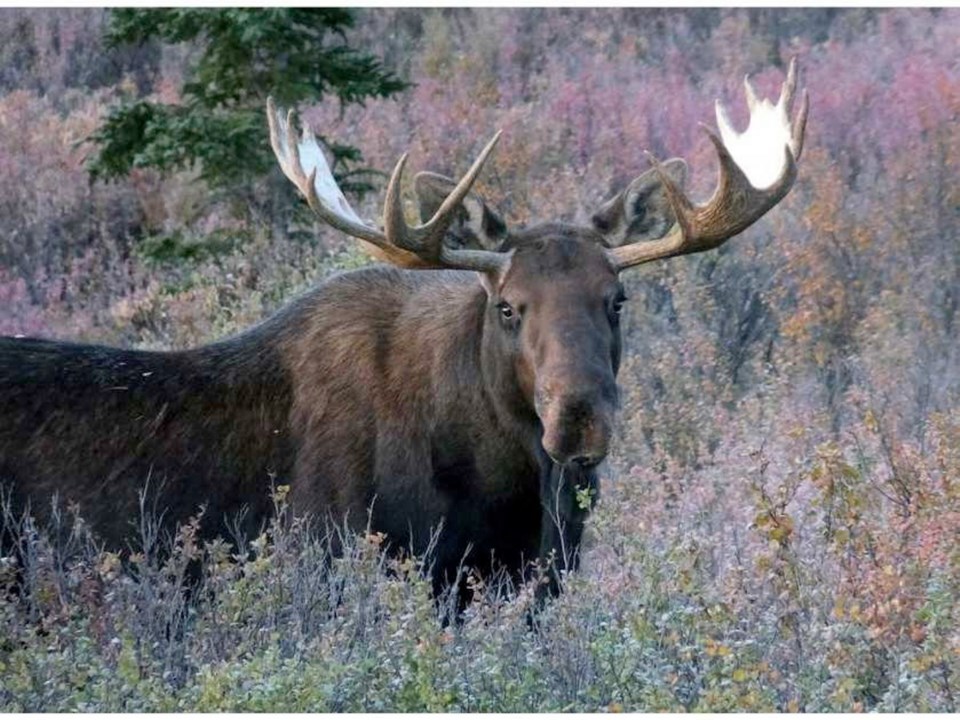An effort by the B.C. government to determine how many moose are killed by hunters in the Chilcotin may be too little, too late, according to the head of the Tsilhqot’in National Government.
For years, First Nations in B.C.’s Interior have worried about the growing impact of the mountain pine beetle on moose, a traditional food source. The province’s decision to open up vast tracts of dead forests for harvest led to a network of roads that gave greater access for hunters. The Chilcotin area west of the Fraser River and between Quesnel and Williams Lake is a popular area for B.C.’s resident hunters.
Now, as the moose population declines, the government has begun a mandatory reporting system for hunters, in part to study the moose population and help co-manage the area with the Tsilhqot’in.
The study is one outcome of the Nenqay Deni accord signed earlier this year between the province and the Tsilhqot’in after a 2014 court decision that awarded 4,400 square kilometres of the Chilcotin to the First Nation.
But Chief Joe Alphonse, the Tsilhqot’in tribal chair, doubts the effort will be successful because there are few moose left in the area.
“My main concern is always about the health of the moose population, and it seems the concern is greater now than it has ever been,” he said. “We’re not finding them. I guess they’re not going to have a very successful study because there is not going to be very many samples provided because there is no more moose left.”
Alphonse said the government estimates there are 360 bull moose alone in his community between Hanceville and Alexis Creek on Highway 20.
“Three-hundred and sixty bull moose in my area? I don’t even think we have 30 bull moose,” he said.
There is no question moose have been hit hard by the pine beetle kill, said Mike Pedersen, the regional executive director for the Ministry of Forests, Lands and Natural Resource Operations in the Cariboo region.
“There was an urgency to deal with the moose population in the Tsilhqot’ins’ traditional territory. There has been close to 15 years of (pine beetle) harvest in the Chilcotin, which is predominantly lodgepole pine,” he said.
“So now we are trying to understand how to move forward with moose management with the Tsilhqot’in. It is centred around understanding what the harvests are. We are collaboratively trying to understand how to manage this piece with them.”
The new rules require hunters who bag a moose to submit their animal for inspection, so that data can be collected on the size and age of the moose as well as location. The rule also applies to guides and outfitters. It is a change from the past, when hunters were encouraged — but not required — to report their kills.
Moose in the Cariboo region can only be hunted through a “limited entry hunting” lottery. This year the province estimated it would issue nearly 1,000 LEH tags in the management units covering Tsilhqot’in traditional territory, which are subject to the compulsory reporting requirements.
But Alphonse said he’s seen little effort by the government to reduce hunting pressure on moose even as it sped up harvest of the forests by putting in many more logging roads.
And he says the province’s land management bureaucrats don’t take into consideration all of the factors affecting the moose population, whether it is logging roads, increased public hunting pressure, the guiding industry and First Nations’ needs.
“They never look at anything from a holistic view,” he said. “When you combine all those things it spells devastation for the moose population in the Chilcotin.”
Pedersen said that earlier this year the province shortened the general hunting season in the west Cariboo, closing September to all but First Nations hunters in an effort to give the Tsilqot’in more opportunities to bag a moose.
“If there is no moose in the forest it makes no difference,” said Alphonse.



